
GEFAHRSTOFFE REINHALTUNG DER LUFT
Scope & Guideline
Elevating air quality research for a healthier tomorrow.
Introduction
Aims and Scopes
- Air Quality Monitoring and Assessment:
The journal extensively covers methodologies for monitoring air quality, including advanced techniques such as optical absorption spectroscopy, biomonitoring with plants, and the use of low-cost IoT devices for particulate matter measurement. - Occupational Health and Safety:
Research articles often focus on exposure assessments in workplaces, emphasizing the need for effective management of hazardous substances and compliance with regulations to protect worker health. - Regulatory Framework and Standards:
The journal discusses changes and developments in technical rules and regulations concerning hazardous substances, providing insights into safety standards and compliance measures. - Innovative Measurement Techniques:
There is a consistent focus on developing and validating new measurement techniques for hazardous substances, including the use of optical methods and sensor technologies. - Environmental Impact Studies:
The journal contributes to understanding the environmental impact of hazardous substances, including studies on emissions from industrial plants and the effects of climate change on air quality.
Trending and Emerging
- Impact of Climate Change on Air Quality:
Recent publications increasingly address the effects of climate change on air quality, highlighting the need for adaptive measures in urban planning and public health. - Real-Time Monitoring Technologies:
There is a growing emphasis on the development and application of real-time air quality monitoring technologies, including IoT-based systems and advanced optical measurement techniques. - Health Impacts of Air Quality on Vulnerable Populations:
Emerging research focuses on the health effects of air pollution on vulnerable groups, particularly children and workers, emphasizing the importance of biomonitoring and exposure assessment. - Sustainable Practices in Hazardous Substance Management:
The journal is increasingly publishing articles on sustainable practices and innovations in managing hazardous substances, reflecting a broader trend towards sustainability in environmental health. - Integration of Digital Tools in Occupational Safety:
There is a notable trend towards integrating digital tools and platforms to enhance hazardous substance management and risk assessment in workplaces, indicating a shift towards more technology-driven solutions.
Declining or Waning
- Traditional Laboratory-Based Methods:
There has been a noticeable decrease in articles focused on traditional laboratory methods for hazardous substance analysis, as more innovative and real-time monitoring techniques gain prominence. - Static Risk Assessments:
The focus on static risk assessments and historical data analysis appears to be waning in favor of dynamic and real-time assessment approaches, reflecting a shift towards more proactive health and safety measures. - General Environmental Pollution Studies:
Research that broadly covers environmental pollution without a specific focus on hazardous substances or air quality management seems to be less frequent, indicating a trend towards more specialized topics.
Similar Journals
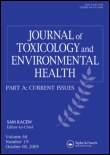
JOURNAL OF TOXICOLOGY AND ENVIRONMENTAL HEALTH-PART A-CURRENT ISSUES
Delivering Essential Research on Environmental ImpactsJOURNAL OF TOXICOLOGY AND ENVIRONMENTAL HEALTH-PART A-CURRENT ISSUES, published by Taylor & Francis Inc, stands as a key resource in the interdisciplinary field of toxicology and environmental health. Operating under the ISSN 1528-7394 and E-ISSN 1087-2620, this journal maintains a strong presence with a Q2 category ranking in Health, Toxicology and Mutagenesis and a Q3 ranking in Toxicology as of 2023. It aims to disseminate critical findings that address contemporary issues in toxicology and environmental health, emphasizing the implications of environmental agents on human health. The journal offers both subscription and open access options, making cutting-edge research accessible to a diverse readership. With coverage of key topics from 1998 to 2024, it is an essential platform for academics, professionals, and students seeking to stay at the forefront of environmental health sciences.

Rocznik Ochrona Srodowiska
Elevating Environmental Studies with Peer-Reviewed InsightsRocznik Ochrona Srodowiska, published by the Middle Pomeranian Scientific Society for Environmental Protection, is an esteemed journal dedicated to advancing the field of environmental science in Poland and beyond. With an ISSN of 1506-218X, this peer-reviewed journal has established itself as a vital resource since its inception in 2007, addressing various environmental issues and promoting sustainable practices. Currently holding a Q3 category ranking in the Environmental Science (miscellaneous) field for 2023, it places itself in the 23rd percentile of Scopus rankings, reflecting a growing influence in the broader environmental research community. While the journal is not open access, it serves as an important conduit for researchers, professionals, and students to disseminate their findings and contribute to the interdisciplinary dialogue aimed at tackling pressing environmental challenges. With a commitment to rigorous research and practical applications, Rocznik Ochrona Srodowiska remains an essential platform for fostering innovation and collaboration in environmental studies.

Asian Journal of Atmospheric Environment
Illuminating Critical Issues in Environmental ScienceAsian Journal of Atmospheric Environment, published by SPRINGERNATURE, is a renowned open-access journal established in 2007, dedicated to advancing research in the fields of Atmospheric Science and Environmental Science. With an ISSN of 1976-6912 and E-ISSN of 2287-1160, the journal aims to offer a platform for the dissemination of cutting-edge research findings, reviews, and innovative methodologies addressing critical environmental issues faced in Asian and global contexts. As of 2023, it holds a respectable Q3 ranking in both Atmospheric Science and Environmental Science categories, positioning itself within the competitive landscape of scholarly publications. The journal is indexed in Scopus and emphasizes its commitment to enhancing accessibility and widespread dissemination of knowledge, making significant contributions to environmental sustainability and atmospheric research. Researchers, professionals, and students are encouraged to engage with the journal as it continues to evolve through its converged years, providing a vital resource for exploring and addressing the challenges that shape our atmospheric environment.
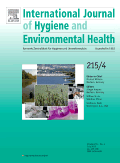
INTERNATIONAL JOURNAL OF HYGIENE AND ENVIRONMENTAL HEALTH
Driving impactful solutions for a healthier environment.International Journal of Hygiene and Environmental Health, published by Elsevier GmbH, stands at the forefront of research in the fields of public health, environmental, and occupational health. With an impressive impact factor that underscores its significance—ranking #30 out of 665 journals in its category, placing it within the top 5%—the journal is a vital resource for academics and professionals seeking to expand their knowledge and contribute to advancements in the field. Since its inception in 2000, the journal has continually evolved, with its Q1 quartile designation reflecting its high-quality contributions and rigorous peer-review process. Accessible to a global audience, it offers flexible open access options, promoting the dissemination of critical findings on hygiene and environmental health issues. Published in Germany, the journal serves as an essential platform for researchers, educators, and practitioners to share innovative studies, timely reviews, and insightful discussions, driving forward the dialogue on public health challenges and solutions in today's world.
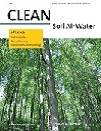
CLEAN-Soil Air Water
Exploring the Intersection of Chemistry and Environmental StewardshipCLEAN-Soil Air Water, an esteemed journal published by Wiley, serves as a vital platform for disseminating research in the fields of environmental chemistry, pollution, and water science and technology. Operating under an Open Access model, it embraces the principles of knowledge sharing, making significant research findings readily accessible to a global audience. With an ISSN of 1863-0650 and an E-ISSN of 1863-0669, the journal has demonstrated its importance in the academic community, reflected in its Scopus rankings within the top quartiles of its categories. Established in 2007 and continuing through to 2024, CLEAN-Soil Air Water offers researchers, professionals, and students an opportunity to explore innovative studies that address pressing environmental challenges, facilitating an exchange of novel ideas and techniques essential for sustainable development. With a publication footprint in Germany and a growing international reputation, this journal is an invaluable resource for those dedicated to advancing the science and practices of environmental stewardship.

Environnement Risques & Sante
Empowering Research for a Healthier PlanetEnvironnement Risques & Sante is a prominent journal focused on the intersection of environmental issues, public health, and safety, offering a platform for scholarly discourse on the critical challenges posed by environmental risks to human health. Published by JOHN LIBBEY EUROTEXT LTD, this journal aims to disseminate impactful research that enhances our understanding of toxicology, mutagenesis, and their implications for public health policy and practices. Though it ceased coverage in Scopus in 2021, its historical contributions remain relevant, addressing urgent topics in environmental science and occupational health. Researchers and professionals engaged in these fields will find valuable insights and findings that inform practice and promote sustainable solutions. For interested readers, further exploration of the journal can provide essential knowledge in coping with contemporary environmental health challenges.

JOURNAL OF ENVIRONMENTAL RADIOACTIVITY
Exploring the intersection of safety and science.JOURNAL OF ENVIRONMENTAL RADIOACTIVITY, published by Elsevier Science Ltd, is a prestigious peer-reviewed journal dedicated to the field of environmental science with a particular focus on the implications and management of radioactivity in the environment. Since its inception in 1984, the journal has served as a vital platform for researchers, scientists, and professionals to disseminate new findings that intersect with areas such as environmental chemistry, health, toxicology, pollution, and waste management. With a strong reputation reflected in its 2023 Q2 rankings across multiple categories and respectable Scopus rankings, it offers valuable insights and rigorous research that shape the discourse on environmental safety and public health. Although it does not operate under an open-access model, subscribers benefit from high-impact articles that push forward the boundaries of knowledge in the management and understanding of radioactive contaminants. This journal is essential for anyone involved in environmental research or policy-making who seeks to stay informed about the latest developments in this critical area of study.

WATER AIR AND SOIL POLLUTION
Elevating research on pollution for a healthier world.Water Air and Soil Pollution is a leading peer-reviewed journal published by Springer International Publishing AG, focusing on the vital fields of environmental sciences, ecological modeling, and pollution management. Since its inception in 1971, the journal has contributed significantly to advancing knowledge in the interdisciplinary realms of Water Science and Technology, Environmental Chemistry, and Environmental Engineering. With an impressive history, the journal currently holds a Q2 quartile ranking in several categories, reflecting its high impact and relevance in these essential areas of research. Its rankings—such as #95 in Environmental Science: Water Science and Technology—illustrate its standing in the academic community. Researchers and practitioners alike can access a wealth of studies and reviews that aim to address pressing environmental concerns and foster sustainable practices, although the journal is not Open Access. Located in Switzerland, Water Air and Soil Pollution continues to be a critical resource for those dedicated to understanding and mitigating pollution, making it an indispensable tool for anyone engaged in ecological and environmental research.
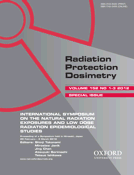
RADIATION PROTECTION DOSIMETRY
Exploring the forefront of radiation protection and health physics.RADIATION PROTECTION DOSIMETRY is a vital academic journal dedicated to the field of radiation protection, published by Oxford University Press. With an ISSN of 0144-8420 and an E-ISSN of 1742-3406, this journal serves as a platform for groundbreaking research and developments in dosimetry, health physics, and radiation safety spanning over four decades since its inception in 1981. Recognized with a Q3 ranking in multiple categories including Medicine (miscellaneous) and Public Health, this journal plays a key role in disseminating important findings that inform policy, enhance practice, and promote the protection of both individuals and the environment from radiation hazards. While currently not available as Open Access, the journal's curated content is essential for researchers, professionals, and students dedicated to advancing knowledge in radiation protection and related areas. Interested readers will find the latest research trends, case studies, and reviews invaluable for their work and studies within this multidisciplinary domain.
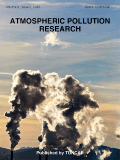
Atmospheric Pollution Research
Pioneering research for a pollution-free future.Atmospheric Pollution Research is a pivotal journal within the realms of Atmospheric Science and Environmental Science, published by the Turkish National Committee on Air Pollution Research and Control (TUNCAP). With an impressive impact, it holds a Q2 ranking in Atmospheric Science and Waste Management and Disposal, and a Q1 ranking in Pollution as of 2023, underscoring its significance and influence in the field. The journal's ISSN 1309-1042 facilitates the dissemination of cutting-edge research addressing contemporary issues in air quality and pollution management. Spanning a convergence of years from 2010 to 2024, it publishes original articles, reviews, and case studies that are essential for advancing knowledge in air pollution and its environmental impacts. Researchers, professionals, and students worldwide will find this journal to be an invaluable resource for staying updated on the latest findings and innovations aimed at mitigating the effects of atmospheric pollution.